Move over, Leonardo DiCaprio — Tom Cruise is apparently “Hollywood’s last real movie star.”
There is certainly some truth to this. Cruise is a movie star in a way that very few modern performers can claim to be. Despite starring in multiple movies grossing over a billion dollars, neither Chris Hemsworth nor Chris Evans can claim to be a movie star. On the other hand, Cruise exerts a strange gravity that tends to warp projects around him. There are only a handful of other actors who exert that sort of pull, including Will Smith.
If only due to the outsized influence of Cruise’s star persona, almost every Tom Cruise movie winds up being about Tom Cruise in one way or another. The Mission: Impossible franchise is an obvious example, often conveniently lining up with the public image that the star is cultivating. Released in the wake of the disastrous publicity campaign around his marriage to Katie Holmes, the opening of Mission: Impossible III is about how Ethan Hunt (Cruise) is a nice fiancé, if kinda boring.
As such, so many of Tom Cruise’s modern blockbusters are often about the star’s existential struggle to make these kinds of blockbusters. Like the modern James Bond franchise, the most recent Mission: Impossible films are largely about dispelling the idea that Hunt is an outdated relic. Unlike the modern James Bond franchise, the Mission: Impossible franchise rarely bothers to couch this struggle in metaphor. It’s harder not to read these films as meditations on Cruise as a leading man.
In Fallout, Hunt faces off against a more modern and morally flexible secret agent played by Henry Cavill, the actor who played a more conflicted and introspective Superman. The Dead Reckoning teaser warns Hunt that his days as an action hero “are over.” There’s an irony in this. Paramount famously terminated its 14-year relationship with Cruise in 2006, deeming his public persona a liability. These days, it can feel like Cruise has turned Paramount into his own personal playground.
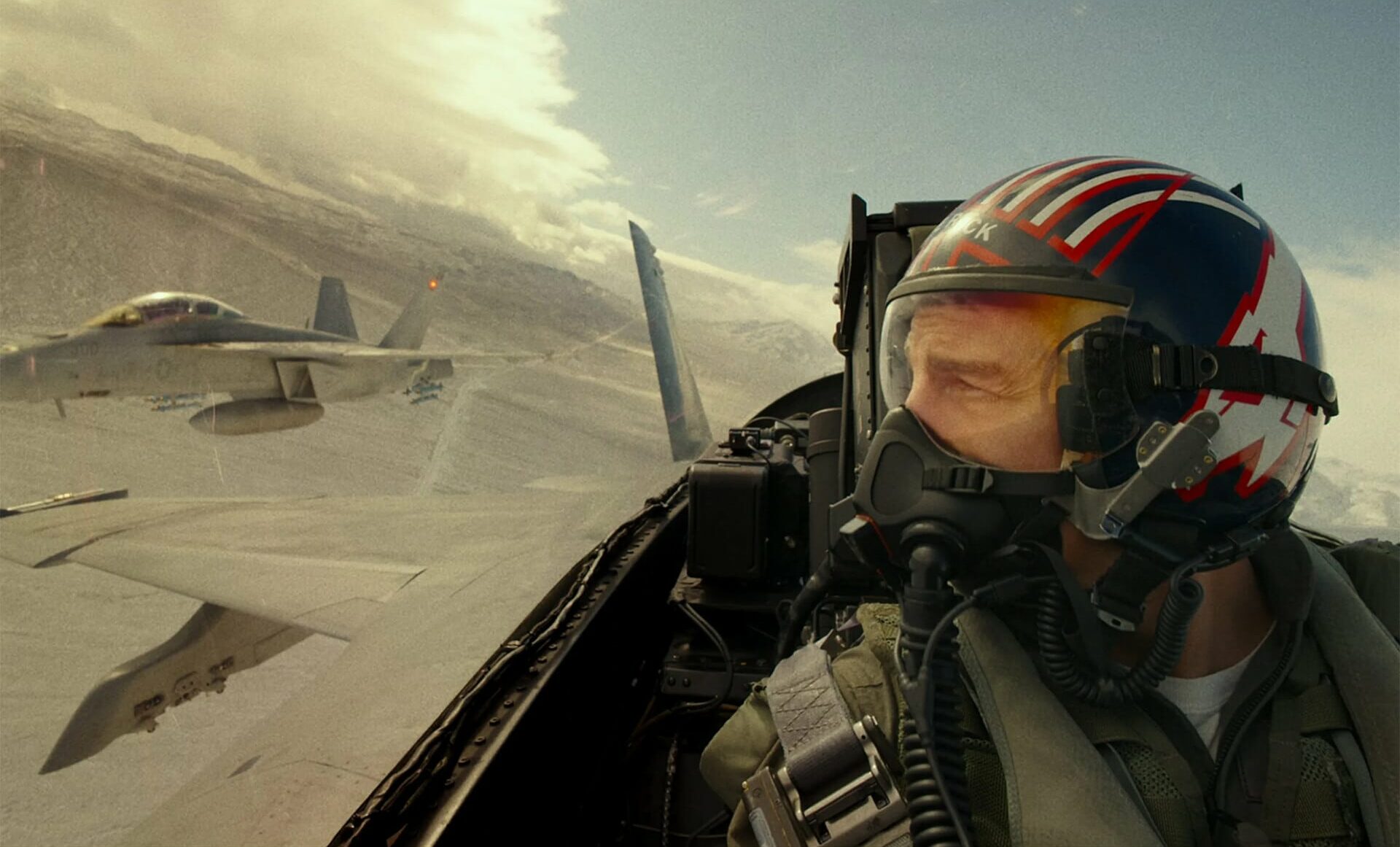
Unsurprisingly then, Top Gun: Maverick positions itself as yet another referendum on Tom Cruise as an old-fashioned movie star. This is obvious from the outset, in which ace pilot Maverick (Tom Cruise) finds himself working on a project to build a Mach 10 fighter jet. On discovering that Rear Admiral Chester Cain (Ed Harris) is on his way to shut down the project, Maverick organizes an impromptu test flight. Maverick manages to break the barrier and crash the plane.
Cain is less than impressed by the hotshot pilot. He sees Maverick as the embodiment of an outdated archetype. “The end is inevitable, Maverick,” Cain warns the insolent rogue. “Your kind is heading for extinction.” Cain wants to replace old-fashioned fighter pilots with drones. It’s a somewhat loaded plot point, but Maverick never really delves into the political or moral implications of drone warfare. Indeed, Cain and his drones disappear quite quickly from the plot.
However, the emphasis on this plot point so early in the narrative establishes one of the movie’s core themes. Top Gun: Maverick is a movie about encroaching modernity, as well as a wrestling match between two radically different approaches to filmmaking. In some ways, the military’s relationship to Maverick is similar to Hollywood’s relationship to Tom Cruise. It is a grudging co-dependence, an understanding that each side needs the other even if they occasionally find themselves at odds.
Much as Hollywood has found itself largely bereft of genuine movie stars who can anchor modern blockbusters, the military in Maverick lacks the kind of old-fashioned fighter pilots who can fly missions the way that Maverick did. As a result, Maverick is drafted in to run an intense bootcamp to prepare a team of talented pilots for a high-stakes strike into enemy territory. Maverick has to train these younger pilots how to do what he once did — a top gun teaching the young guns.
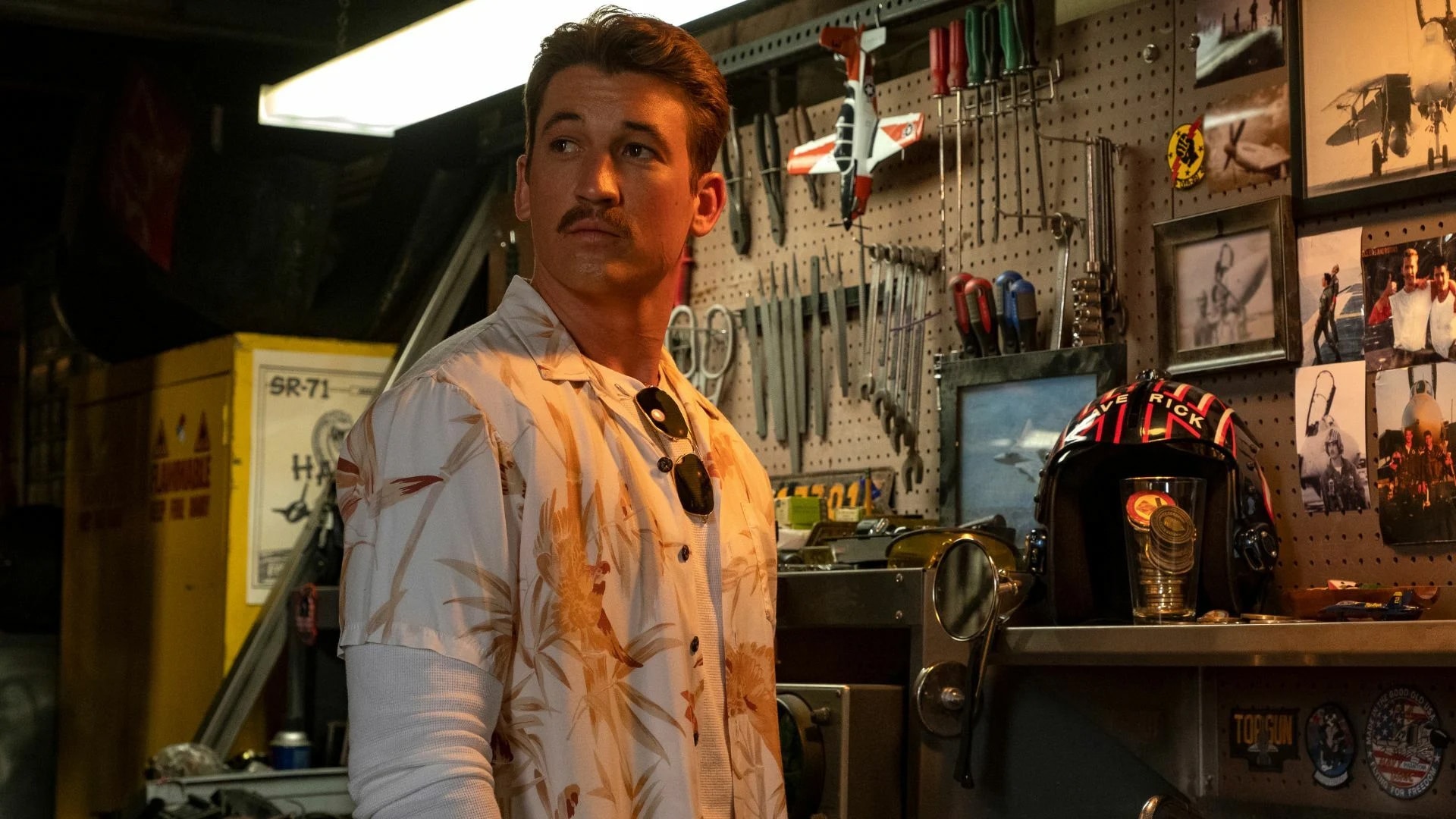
This group of trainees includes a couple of charismatic young performers who might have been movie stars had they emerged a decade or two earlier. Glen Powell has a significant supporting role as the arrogant Hangman, a pilot who needs to learn to care about his teammates. Miles Teller stars as Rooster, the son of Maverick’s old co-pilot Goose (Anthony Edwards). Both characters will have to pay attention to Maverick if they hope to develop the skills necessary to survive the movie.
Powell demonstrates the sort of easy charm that has made him a favorite of director Richard Linklater, standing out in both Everybody Wants Some!! and Apollo 10 1⁄2: A Space Age Childhood. In another life, Powell might have been a fixture of big-budget romantic comedies, but in the modern cinematic landscape, he has to settle for the Netflix breakout Set It Up. Teller is a more famous example of a promising young actor who failed to transition to stardom, notably with Fantastic Four.
This is a clever dynamic, as one of Hollywood’s last movie stars finds himself forced to act as mentor to two younger performers who know first-hand how difficult modern stardom can be. However, it also brushes up against the limitations of Tom Cruise as a performer. A story like this requires a more generous leading man. After all, it is the role of the mentor to teach their students and then get out of the way. For all his myriad talents, Cruise is not an actor who will get out of anybody’s way.
However, this contrast works as part of the larger meditations within Top Gun: Maverick. The film is aggressively about the gulf between old-fashioned filmmaking and modern techniques. Much of the publicity around Maverick has focused on how Cruise did most of his own flying, with stories about the boot camps for the actors and even promotional flights with talk show host James Corden. There is a strong emphasis on the reality of all of this, on how much of the film was shot without illusion.
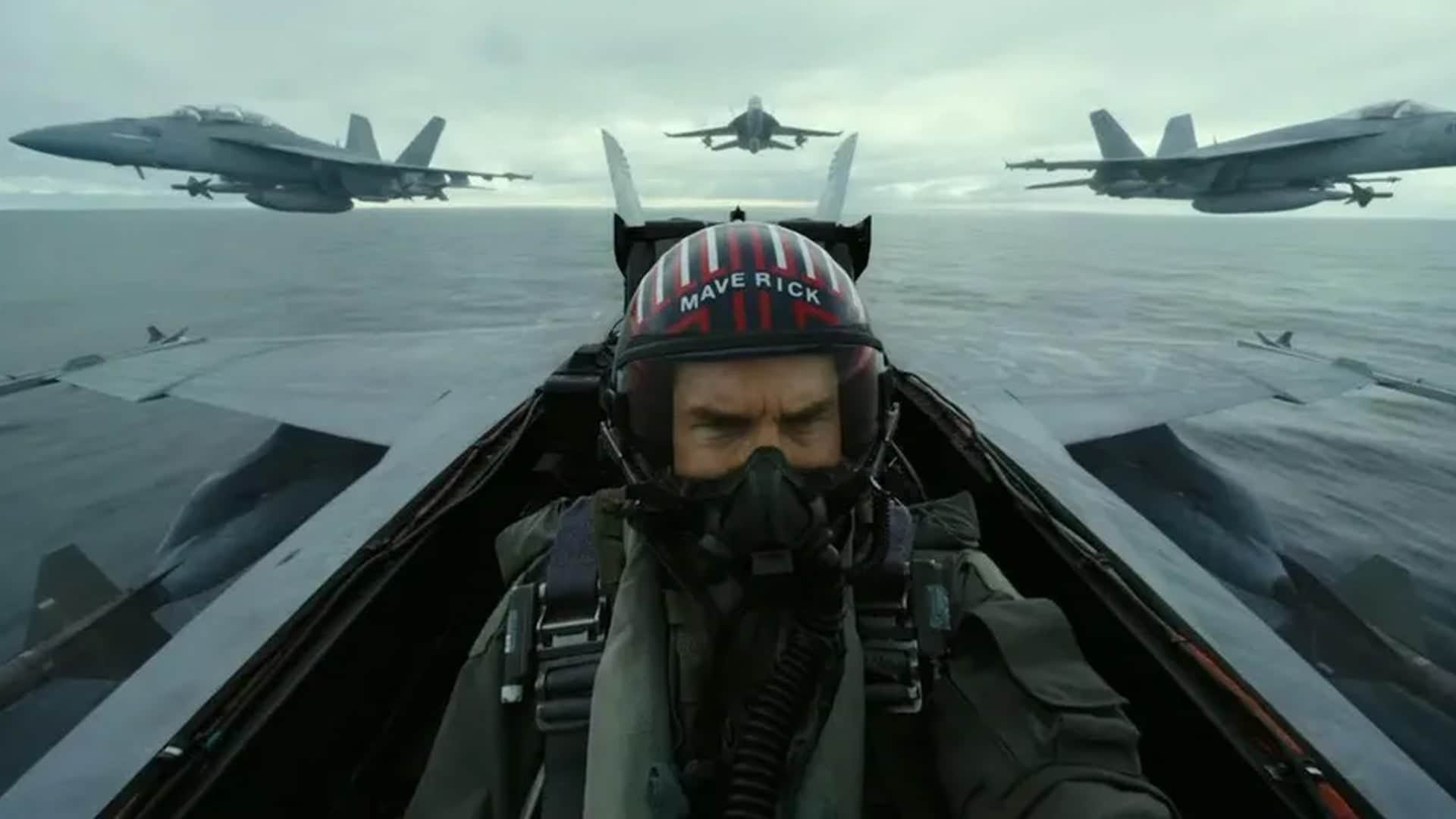
Again, this is par for the course with Tom Cruise. Writer and director Christopher McQuarrie has acknowledged that the bulk of his script for Fallout was reverse-engineered from the climactic sequence in which Cruise would actually fly a helicopter. McQuarrie recalls that the entire project worked backwards from Cruise declaring, “I want to learn how to fly, and you figure out a sequence that makes use of that.” Naturally, Cruise is going to space to shoot his next movie.
In a world where green fields are often rendered with green screens to save time and companies will try to recreate locations like the Amazon in an anonymous Atlanta studio, this commitment to practical and old-fashioned special effects is admirable. Director Joseph Kosinski captures this aerial spectacle in breath-taking beauty and clarity with IMAX cameras. It is all the more effective for the fact that it is real and tangible, none of it caught in a computer-rendered uncanny valley.
Whatever criticisms one might have of Top Gun: Maverick as a narrative, it is a beautiful piece of pop spectacle deserving of as big a screen as possible. Cruise has understandably been positioning himself as a champion of the theatrical experience at a time when Hollywood is very much in flux, with projects like the new Predator movie going straight to streaming. Cruise secured Maverick an exclusive 120-day theatrical window, which is great.
Maverick folds this movie-making debate into the narrative itself. In order to properly train these young pilots, Maverick has them simulate the mission that they will fly. In what feels like a nod to perhaps the definitive Hollywood blockbuster, the mission recalls nothing so much as the trench run from Star Wars. However, in doing their preparation, the pilots fly in a vast open space with computer-programmed obstacles that are invisible to the naked eye.
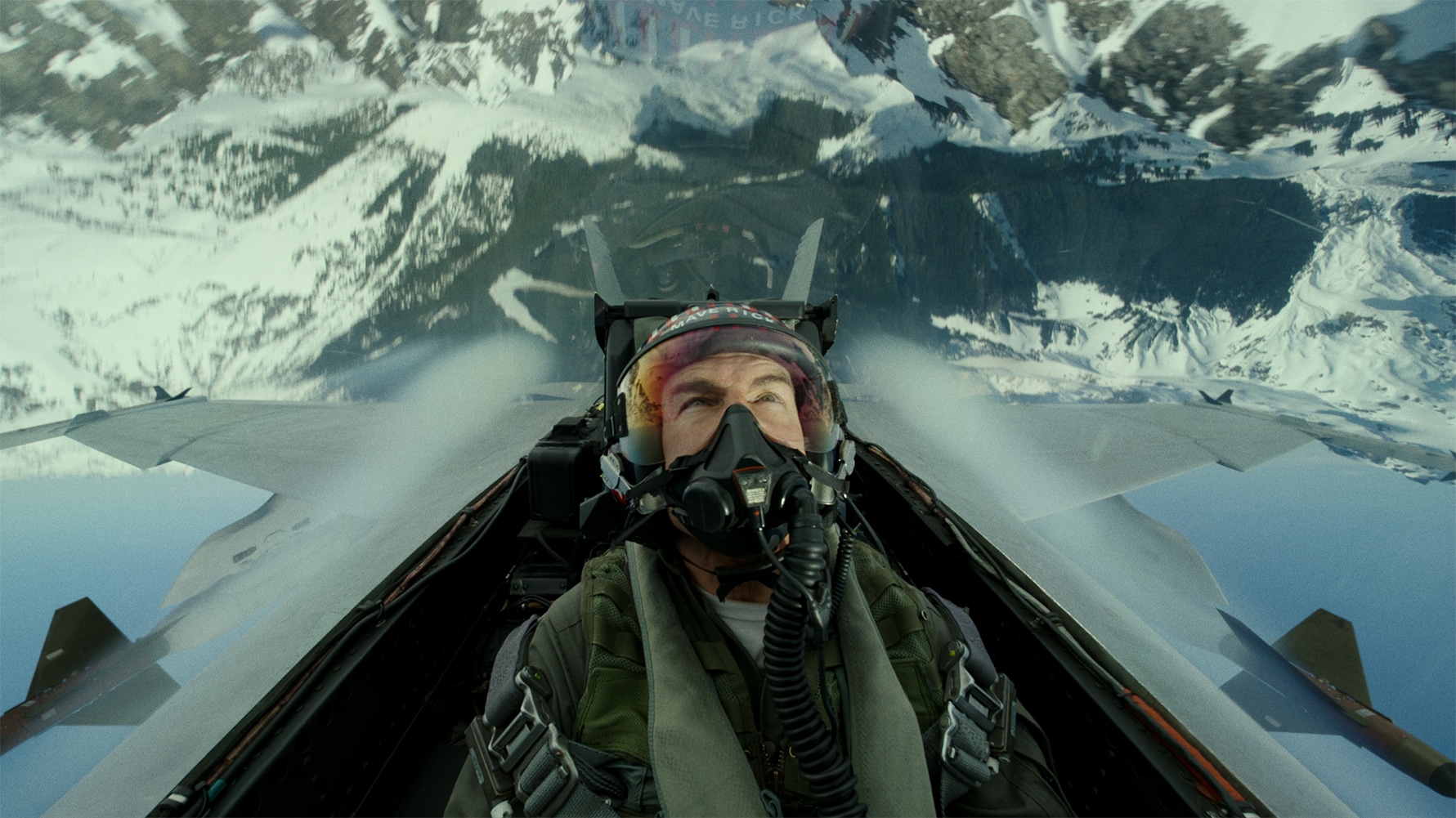
It’s a choice that feels like a wry commentary on the experience of many modern actors, performing against elements that exist primarily inside a computer hard drive. Last week, actor Matthew Macfadyen summed up his experience of such filmmaking as “ass-paralyzingly boring, just acting to tennis balls and dots on the screen.” Kosinski mines these simulation sequences for drama, but they work primarily in contrast to the presentation at the actual mission at the climax.
That climactic sequence is a white-knuckle thrill ride. The trench is real. The mountain is real. The planes are real. They all interact with one another in a way that feels more tangible and more material than in most modern blockbusters. It is the sort of spectacle that is difficult to replicate with computer-generated special effects. It is an argument for the sort of old-fashioned filmmaking that rarely happens these days. It is Cruise arguing for the kind of films that he used to make.
As with the sequences with the younger pilots and the would-be movie stars, there is an interesting tension here between Cruise’s very individualist movie star persona and the argument that Maverick is advancing. In contrast to the rugged Reagan-era individualism of Top Gun, Maverick is a film about selflessness, about thinking about and accepting responsibility for others. Top Gun is about Maverick letting go of Goose’s death. Maverick is about Maverick refusing to accept anyone else’s sacrifice.
So this becomes something of a savior narrative, part of Cruise’s attempts to position himself as the champion of cinema by filming himself attending Tenet, boasting about seeing every theatrically released movie in disguise, and ranting at crew members about how “they’re back there in Hollywood making movies right now” because of the work being done on Dead Reckoning. Maverick presents its lead’s rule-breaking as similarly altruistic, risking his life selflessly to save others.
There is no small amount of ego in the way that Top Gun: Maverick presents itself as an aging movie star coming back to show a new generation how these sorts of films are supposed to work. However, that makes it more impressive that it works as well as it does.

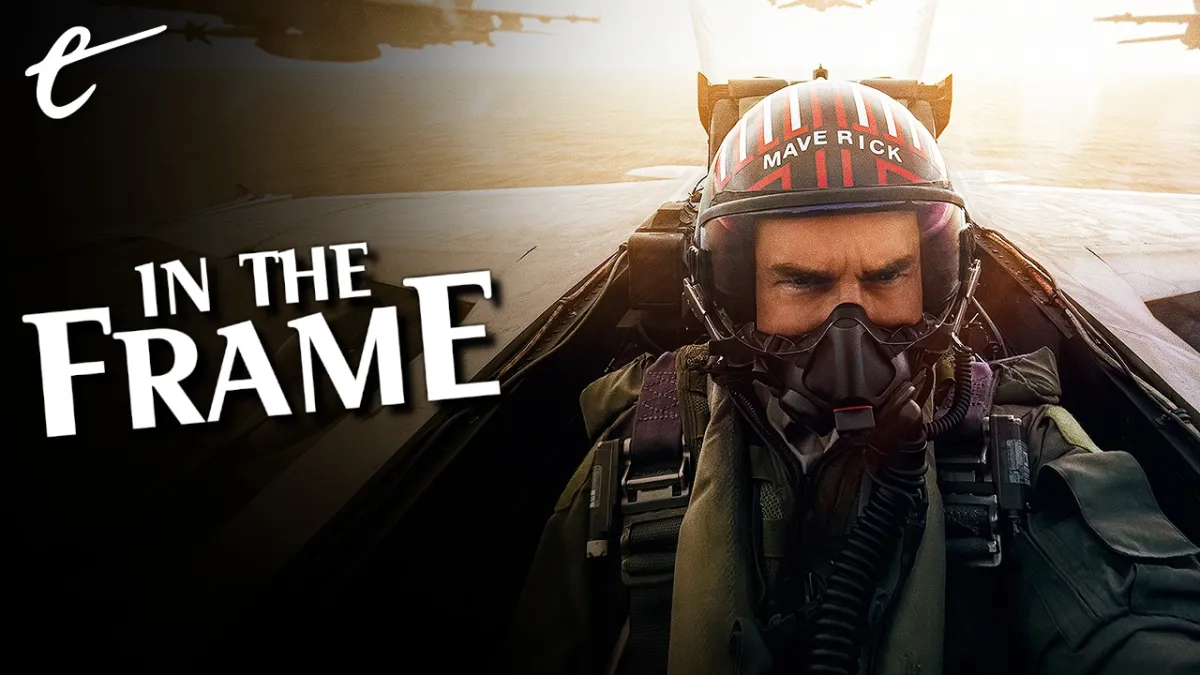




Published: May 30, 2022 11:00 am